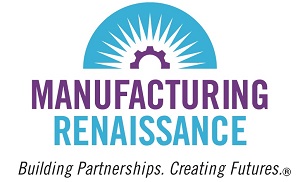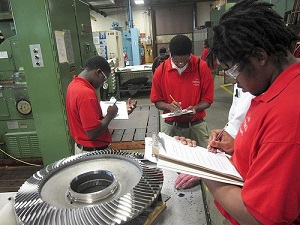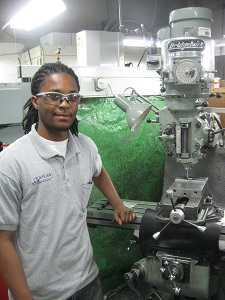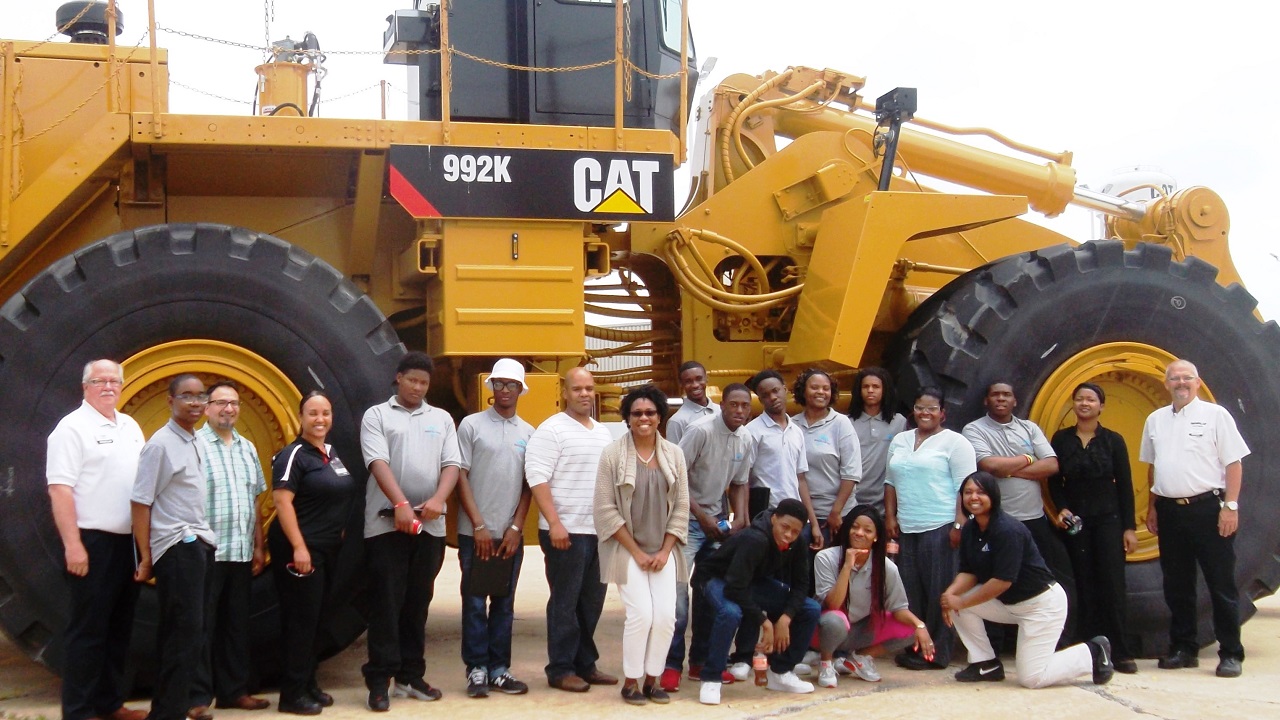Special to the Philanthropy Journal
By David Robinson, Erica Swinney and Dan Swinney
Alex didn’t make it to classes very often at Austin High School on Chicago’s tough west side. When he did, he spent most of his time dealing drugs outside of the building or making trouble inside. “I didn’t see any point to going to class,” he said. “They weren’t teaching anything I needed to know and I needed to know how to make some money.” If Alex had been at Austin High 40 years ago he could have opted to work at one of the hundreds of manufacturing facilities that did business in the community and he would have been one of over 20,000 people making a good living right around the corner from the school. Due to short-sighted management, global competition, and downright community abandonment, all but a few of those companies are shuttered and young people like Alex take whatever opportunity the bleak economy in their communities offer, which for him, with a felony and without formal education or special skills, usually means engaging in the dangerous underground drug trade.
 But this story doesn’t end with Alex serving a long sentence in some human cage, or as another urban victim of violence. In fact, Alex is a now a model citizen and an example of what can happen when the right mix of programming, education, opportunity, and a willing student converge. An instructor at the Austin College and Career Academy—an advanced manufacturing curriculum within the high school that had just launched—convinced him to take a few classes. “Man, I really took to working with the machines,” recalls Alex. After earning industry certifications that prepared him for work as a skilled machinist, Alex is now one of the model employees at a local manufacturing company and he is pursuing even more advanced training to make him even more valuable. “I just bought a two-flat, I have two cars, I’m taking care of my daughter and I make around 70 thousand dollars,” he said, without even smiling. When asked how his family thinks of him now he choked up a bit and said, “my mom is real proud.”
But this story doesn’t end with Alex serving a long sentence in some human cage, or as another urban victim of violence. In fact, Alex is a now a model citizen and an example of what can happen when the right mix of programming, education, opportunity, and a willing student converge. An instructor at the Austin College and Career Academy—an advanced manufacturing curriculum within the high school that had just launched—convinced him to take a few classes. “Man, I really took to working with the machines,” recalls Alex. After earning industry certifications that prepared him for work as a skilled machinist, Alex is now one of the model employees at a local manufacturing company and he is pursuing even more advanced training to make him even more valuable. “I just bought a two-flat, I have two cars, I’m taking care of my daughter and I make around 70 thousand dollars,” he said, without even smiling. When asked how his family thinks of him now he choked up a bit and said, “my mom is real proud.”
What is behind this promising transformation? What we believe is a 21st Century model for economic and social development centered around advanced manufacturing skills training.
Austin High School, Manufacturing Renaissance, and Manufacturing Connect
 In 2005, Manufacturing Renaissance (MR) was challenged by Arne Duncan, the CEO of Chicago Public Schools (CPS), to start a school in the Austin community that would have a deep linkage to the manufacturing sector. We rose to the challenge and submitted a proposal to the Board of Education that was accepted. The school opened in 2007 with a freshman class. We designed it as a public school rather than as a charter or contract school. First called Austin Polytechnical Academy, it is now part of the Austin College and Career Academy. From the beginning, Chicago Public Schools has been responsible for the academic performance of the school. The teachers are represented by Chicago Teacher’s Union Local 1. MR has been responsible for the career program—now called Manufacturing Connect (MC). Working with public schools, we can begin to build an educational infrastructure that can connect the students and adults in the community with the regional manufacturing sector, and, in some cases, serve as a key factor in recruiting companies to locate production in the community.
In 2005, Manufacturing Renaissance (MR) was challenged by Arne Duncan, the CEO of Chicago Public Schools (CPS), to start a school in the Austin community that would have a deep linkage to the manufacturing sector. We rose to the challenge and submitted a proposal to the Board of Education that was accepted. The school opened in 2007 with a freshman class. We designed it as a public school rather than as a charter or contract school. First called Austin Polytechnical Academy, it is now part of the Austin College and Career Academy. From the beginning, Chicago Public Schools has been responsible for the academic performance of the school. The teachers are represented by Chicago Teacher’s Union Local 1. MR has been responsible for the career program—now called Manufacturing Connect (MC). Working with public schools, we can begin to build an educational infrastructure that can connect the students and adults in the community with the regional manufacturing sector, and, in some cases, serve as a key factor in recruiting companies to locate production in the community.
Many believe that the work by Manufacturing Renaissance at Austin College and Career Academy represents a model that should be replicated in other schools in the Chicago area and around the country. In 2014, MR received a $2.7 million grant to further develop our work at Austin College and Career Academy in competition with 400 other school districts including CPS. In partnership with Chicago Public Schools, we are now starting to expand program services to other schools, including Northwest Middle School—where last year we introduced manufacturing and engineering to 200 8th graders, and we are expanding the program to Prosser Career Academy—a school with 1,400 students—principally Hispanic and Bowen High School on Chicago’s Southside.
Manufacturing Connect—A Success Story
MR’s Manufacturing Connect program, first developed in the context of Austin, is a success story and represents promising practice in building private/public partnerships in public education, in linking reform in education to the economic development of a community, and in offering multiple pathways of success particularly for those students that come from troubled school districts.
The Austin neighborhood is one of the most troubled neighborhoods in the city. Students enter the 9th grade at Austin College and Career Academy often with math and reading skills as low as the 4th grade level. 36% of Austin residents live in poverty[1] due to decades of de-industrialization and marginalization. 99% of Austin College and Career Academy students are eligible for free lunch. The academic and other challenges at Austin College and Career Academy Multiplex are similar to the challenges of other schools on Chicago’s West and South sides.
We chose the Austin community in 2005 for our first effort to re-link public education to the manufacturing sector because of our commitment to equity and the belief that rebuilding our manufacturing capacity in Chicago should begin in those communities hit the hardest by de-industrialization like Austin. We believe that these communities need to be prioritized in promoting development despite the many difficulties.
Manufacturing Connect Results
The inspiration for the Manufacturing Connect program lies in best European practice linking educational institutions to the dynamics of the manufacturing sector in production, management, ownership, and innovation. We are inspired by practice in Spain, Italy, Germany, Denmark, and Switzerland. We apply the lessons we have learned in the context of American communities. Our work in the Austin community reflects the quality of our performance and compares very favorably to similar efforts around the country—the reason our work is recognized around the country.
 Alex was just one of many of our success stories. Here’s a summary of our overall performance to date.
Alex was just one of many of our success stories. Here’s a summary of our overall performance to date.
- 298 paid internships and summer jobs in manufacturing for youth earning collectively over $291,000
- 347 nationally-recognized industry credentials have been earned by 275 MC program participants
- 65 full-time manufacturing jobs, with an average retention of 1 year, earning between $20 – $75k per year plus benefits
- MC has worked with 91 manufacturing companies to provide learning and work experiences for participants
- MC is responsible for establishing the first manufacturing technology dual-credit course in the Chicago Public School system in 2015, the first class of 16 juniors all passed earning 3 college credits each while earning industry credentials
- Building Training Infrastructure: MC raised over $400,000 in private investment to install the WaterSaver Faucet Manufacturing Technology Center, the only accredited, state-of-the-art machining training facility on the west side of Chicago, and to support the MC program.
- Expanding Workforce Development: MC provided adult training using the machining facility at Austin High School. Over 80 percent of adult training graduates secured jobs or earned raises or promotions in current jobs averaging a $15.83/hour wage. We have now enlisted the Jane Adams Resource Corporation to run the adult training program.
- Entrepreneurship Development: MC has been working towards starting a student-run manufacturing cooperative called Mech Creations. We want young people not only to aspire working in manufacturing but working towards ownership of manufacturing companies.
- Community Partnerships: MR actively partners with a variety of community based organizations, especially Austin Coming Together, around Chicago on helping to build a community-driven support for Chicago becoming an international leader in advanced manufacturing. Rebuilding the Community: These programs are complemented by recent improvements in the manufacturing programs at City Colleges—particularly at Daley College—long advocated by the Chicago Manufacturing Renaissance Council. In sum, we have—with our partners in CPS and City Colleges—created an educational infrastructure for the manufacturing sector.
Conclusion
Through our Manufacturing Connect program we can go into any school district within proximity of manufacturing companies; establish a strong connection between the school, the community, and manufacturers; and create multiple pathways for success for students. This approach can set the stage for rebuilding a modern manufacturing sector in the community as a foundation for broader community development.
[1] American Community Survey






